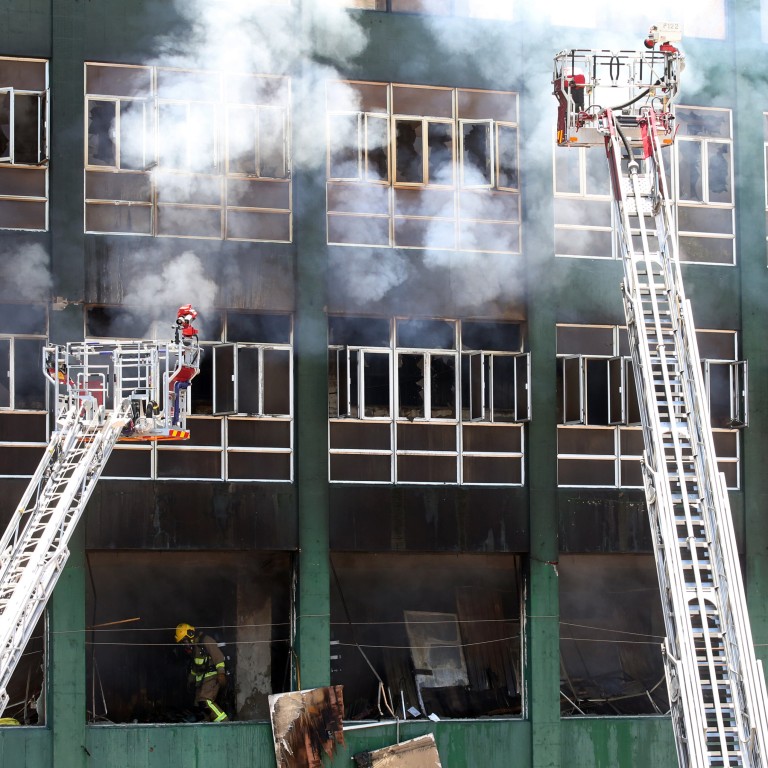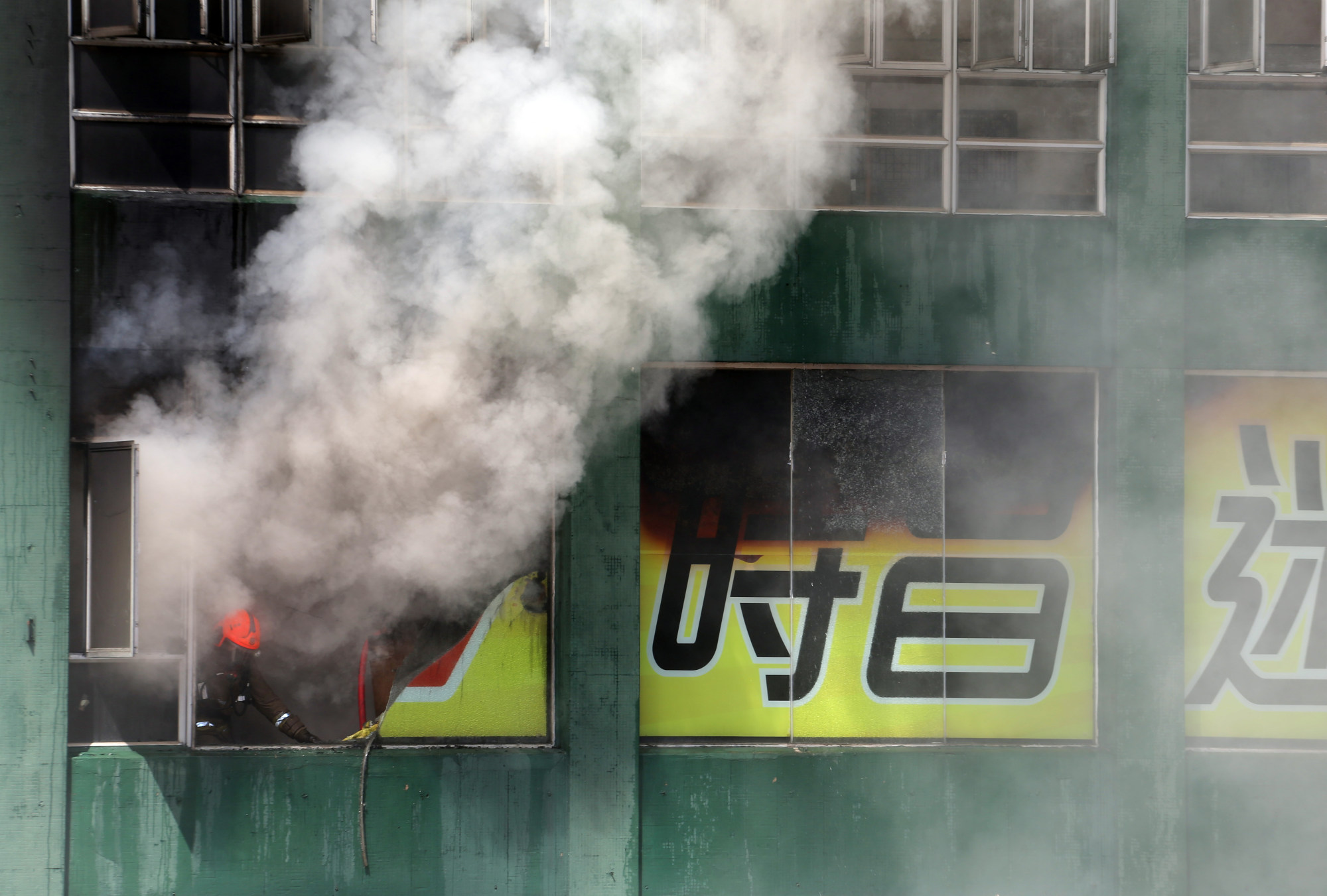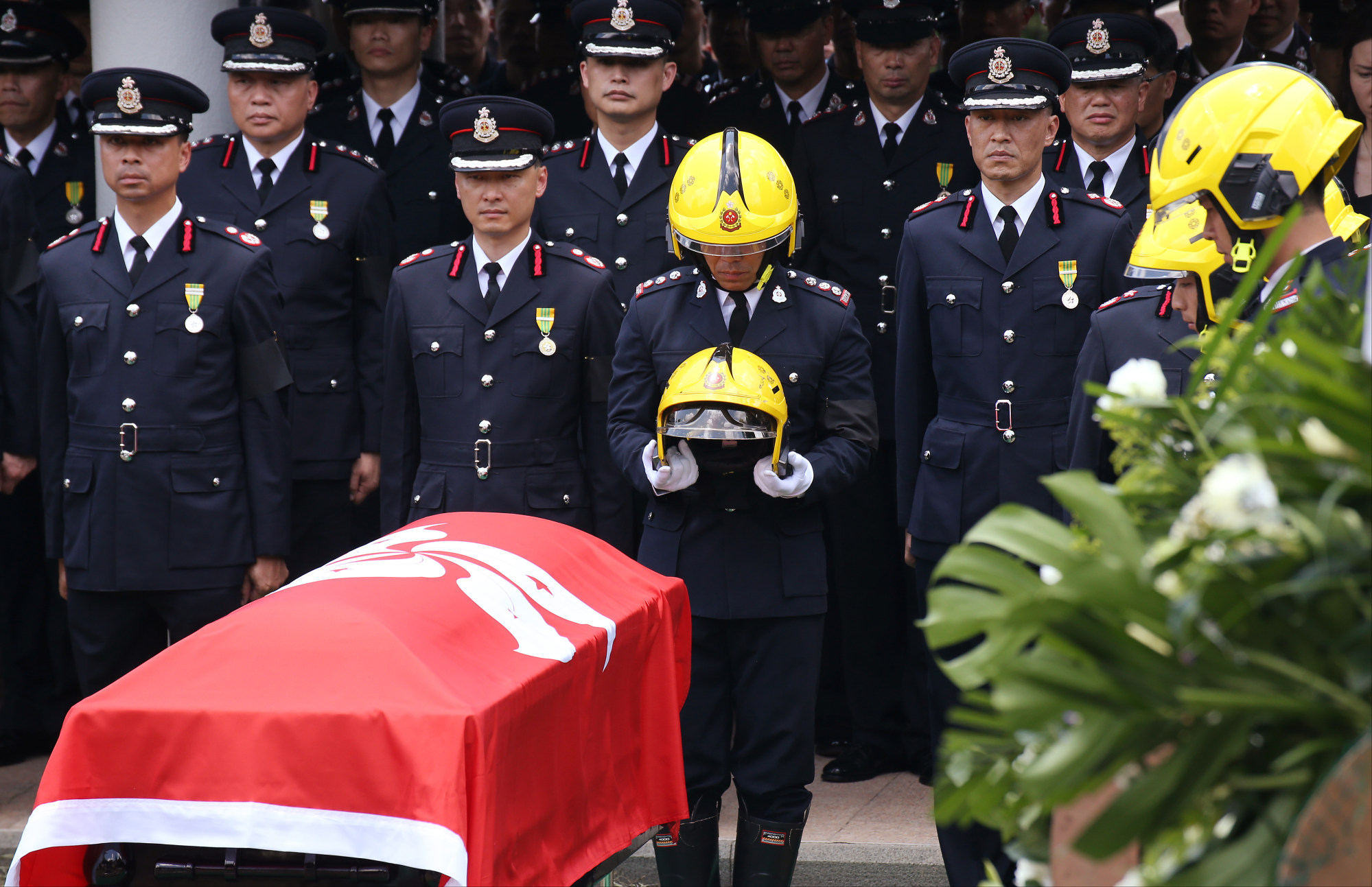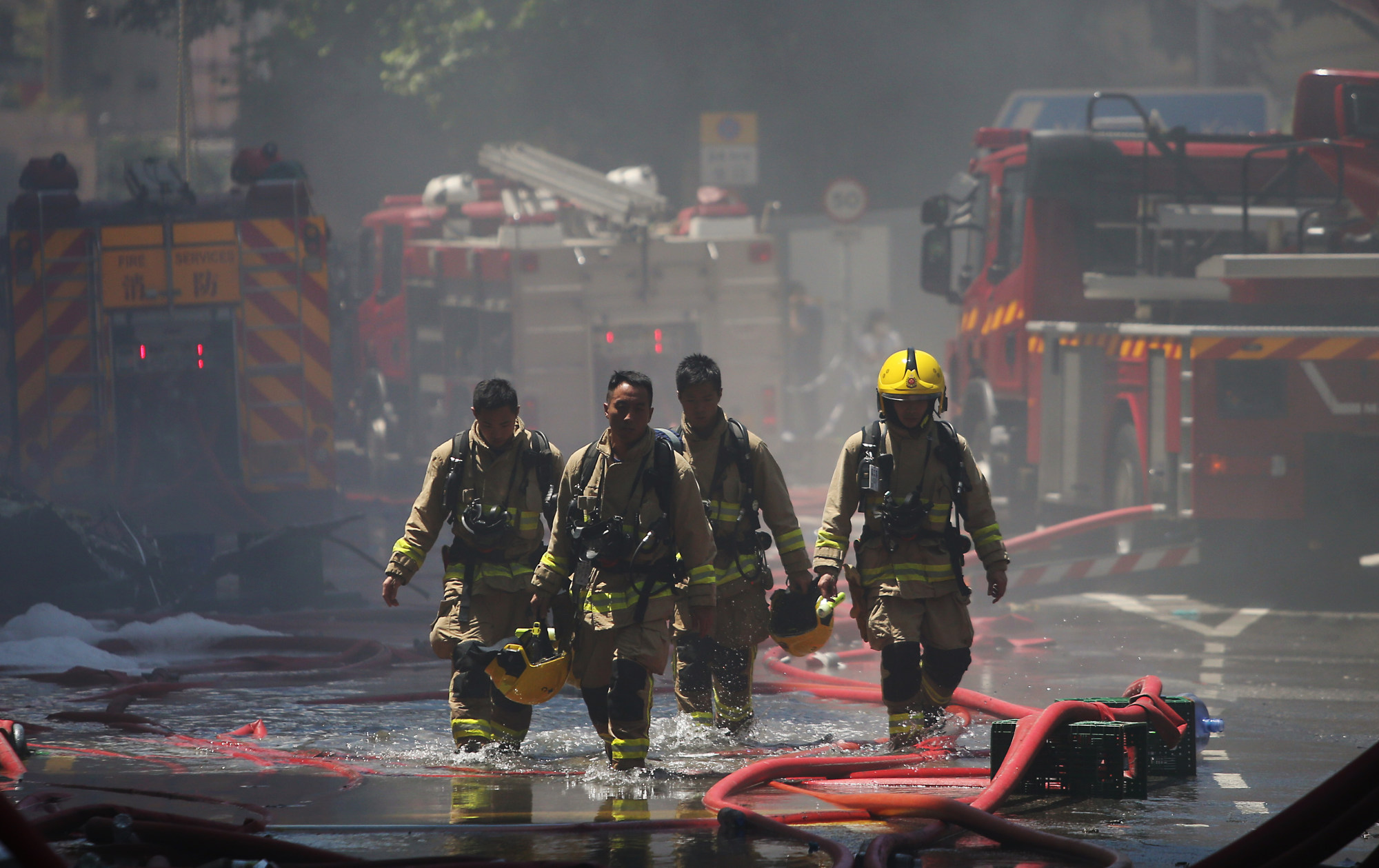
Coroner urges authorities to license Hong Kong’s mini-storage industry to ensure compliance with fire safety, after firefighters’ deaths in 2016 blaze
- Two firefighters died battling one of the city’s longest-running blazes in a storage facility in Ngau Tau Kok
- Out of 1,222 premises inspected as of April 30 this year, a total of 3,222 common fire hazards were found in 959 of these facilities
Hong Kong’s coroner has urged authorities to issue licences to mini-storage premises to ensure compliance with fire safety rules after he returned a verdict of death by misadventure for two firefighters who died after battling an inferno at an industrial building nearly six years ago.
Coroner Philip Wong Wai-kuen on Tuesday ruled that poor communication within the fire service and a lack of fire safety awareness among those operating and managing storage cubicles contributed to the fatal blaze at Amoycan Industrial Centre that raged from June 21 to June 25, 2016.
The fourth-alarm fire in Ngau Tau Kok was the longest-running blaze at an industrial premises in Hong Kong history, having burned for 108 hours and 16 minutes. It was the seventh-longest of any fire in the city.

Senior Station Officer Thomas Cheung, 30, and Senior Fireman Samuel Hui Chi-kit, 37, were killed on the first and third day of the operation, respectively, as they battled the flames inside the SC Storage facility on the third floor of the then 66-year-old industrial complex.
The Coroner’s Court heard the fire might have been caused by a split-type air conditioner at the mini-warehouse which experienced a short circuit at around 10am on June 21. Metal sheets separating the 200 cubicles coupled with flammable items stored inside some of the storage spaces accelerated the fire’s spread.
A manager discovered the fire at 10.30am but did not immediately try to put it out as he did not know how to use an extinguisher. Instead of calling police, he contacted the facility’s owner, Kevin Shee, for advice.
Firefighters arrived at the scene after 11am, with the blaze escalating into a third-alarm fire shortly after noon, and a fourth-alarm one in the evening. The severity of fires is graded on a scale of one to five, with the latter the most serious.
Cheung and Hui were initially tasked with breaking doors and clearing obstacles for their teammates, but they got lost in the haze permeating the corridors and fell into a coma amid intense heat. They were declared dead at hospital.

In Tuesday’s verdict, Wong said both SC Storage and Amoycan Industrial Centre had failed to ensure its frontline workers were equipped with a basic level of fire safety knowledge, with the former also failing to maintain an accurate floor plan.
The coroner also took the fire service to task for its inability to develop an effective communication protocol, with operational decisions improvised by officers on the spot often leading to confusion and errors.
“I agree that information changes very quickly during an operation, but tactics and plans are necessary in dousing the flames,” Wong said.
New firefighting teams to be set up in wake of Ngau Tau Kok blaze
He raised an extra 14 points of advice which he urged government departments and the management of SC Storage and Amoycan Industrial Centre to adopt, on top of the 18 recommendations previously made by an interdepartmental task force in 2018.
In particular, he called for greater awareness of the risks of coronary artery diseases that firefighters faced, citing autopsy findings that both Cheung and Hui had displayed symptoms of heart ailments before their deaths.
Wong also questioned the effectiveness of issuing fire hazard abatement notices to premises that violated fire safety rules, noting that about one-third of requests for improvement had yet to be complied with.

He refrained from giving specific advice on regulating mini-storage facilities, which he said fell outside the court’s expertise, but suggested authorities consider licensing the industry.
“The abatement notice system is too passive. Authorities should take active approaches to ensure operators provide safe services,” he said.
Wong said the two firefighters had “died heroically while on duty”, and that nothing short of that description could adequately put the circumstances of their deaths into words.
“This is exactly the brave spirit sought from firefighters: instead of running away or lazing around, Cheung stepped up and sacrificed himself. His act demands respect,” Wong said.
Speaking of Hui, the coroner added: “When his partner was unable to break open the door, Hui immediately lent a helping hand. He had never backed off throughout the operation.”
Experts sound alarm over Hong Kong’s fire safety record
The Fire Services Department said in a statement that it would study the recommendations in the verdict to prevent the recurrence of such tragedies.
It said the interdepartmental fire investigation task force, which was set up to conduct an in-depth investigation into various aspects of the fire, had made a number of recommendations to the department.
The department said it had implemented a series of improvement measures including improving the arrangement for rest areas at incident sites, enhancing the operational procedures of breathing apparatuses and stepping up on promoting emergency preparedness in the community.

As of April 30 this year, the fire department had inspected 1,222 mini-storage premises and found a total of 3,222 common fire hazards in 959 of these facilities. It had prosecuted 221 operators who failed to comply with the notice.
The Labour Department and Buildings Department said they would study the court’s recommendations and take appropriate follow-up actions.
The Lands Department had also recorded 238 cases in which mini-storage facilities allegedly breached the use specified in the land lease in industrial buildings between July 2016 and March 2021.

